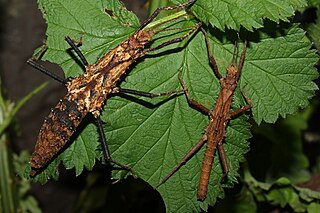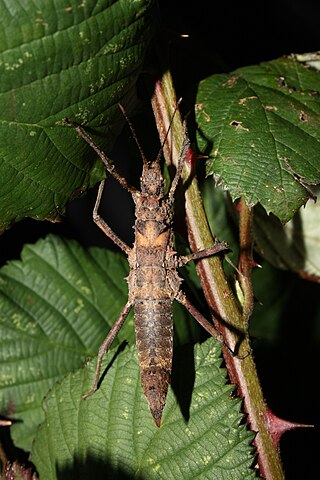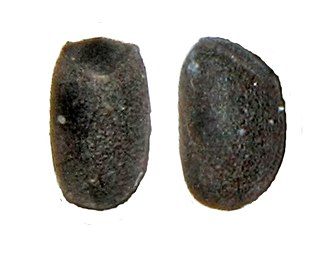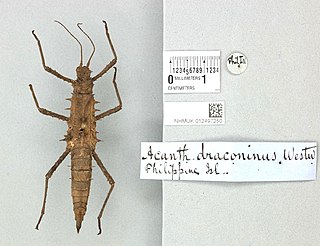
The Heteropterygidae is a family of stick insects belonging to the suborder Euphasmatodea. Species can be found in Australasia, East and Southeast Asia. More than 130 valid species have been described.

The Obriminae are the most species-rich subfamily of the Phasmatodea family Heteropterygidae native to Southeast Asia. It is divided into two tribe.

Datamini is the only tribe within the subfamily of the Dataminae from the order of the Phasmatodea. The representatives of this subfamily are on average not as large as those of the other two subfamilies belonging to the family of Heteropterygidae.

Heteropterygini is the only tribe within the subfamily of the Heteropteryginae. With 19 representatives described, this subfamily includes the fewest species of the three subfamilies, but includes the largest and most striking species of the family.

The genus Planispectrum combines very small and compact species from Southeast Asia.

Hoploclonia is the only genus of the tribe Hoplocloniini and brings together relatively small and darkly coloured Phasmatodea species.

The Obrimini are the most species-rich tribe of the Phasmatodea family of the Heteropterygidae native to Southeast Asia.

The genus Tisamenus native to the Philippines combines small to medium-sized species of stick insects.

Aretaon is a genus of stick insects native to Borneo and the Philippine island Palawan.

Eubulides is a stick insect genus native to the Philippines.

Aretaon muscosus is a stick insect species from the family Heteropterygidae, which is native to Borneo.

Tisamenus serratorius is a stick insect species that occurs on the Philippine island Luzon.

Tisamenus deplanatus is a stick insect species native to the Philippine islands Luzon and Mindanao occurs.

Tisamenus fratercula is a stick insect species native to the Philippine island Luzon.

Hoploclonia cuspidata is a stick insect species native to the north of Borneo and is also called Brunei Hoploclonia stick insect.

Tisamenus clotho is a stick insect species native to the Philippines.

Stenobrimus is a genus of medium-sized stick insects native to the Philippines.
Pterobrimus is a monotypic genus of stick insects (Phasmatodea), containing the species Pterobrimus depressus, wich is native to Fiji.

Tisamenus draconina is a species of stick insect in the family Heteropterygidae native to the Philippines.

Tisamenus ranarius is a stick insect species (Phasmatodea), in the family of the Heteropterygidae native to the Philippines.



















